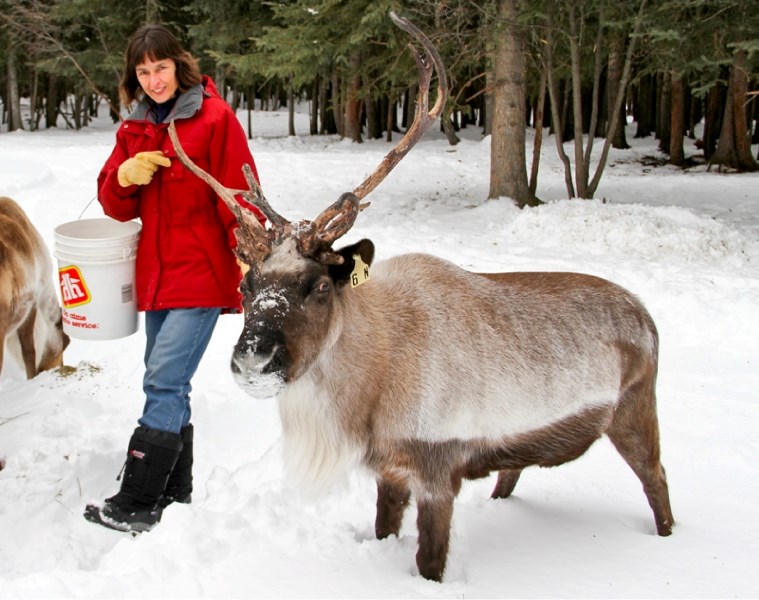When Monika Hoegger moved with her family to a rural acreage in Bergen, she decided to keep some animals on the property. While neighbours raised cows and horses, she decided to choose an alternative livestock: reindeer.ìI wanted something a little different than everybody else,î she said.ìWe visited this one farm and the owner had reindeer. We just fell in love with the animals.îFor the past 10 years, Hoegger has been caring for her reindeer herd, which usually has 30 animals.She sells breeding stock and uses the antlers and hides to make crafts. She also brings some of her reindeer to Christmas events in Alberta, where children and their parents can pet them.ìWhen people see reindeer, the most heard comment is probably ëWe thought they would be taller.' I do not know how many times we have heard that,î said Hoegger.She blames Hollywood for people's misconception of the reindeer's real size.ìThere are Christmas movies where they use a white-tailed deer, even if it is an animated movie. I don't know why,î said Hoegger.While reindeer meat is commercially sold in Alaska and in Europe, Hoegger believes that there are not enough reindeer in Canada to have the meat available here.ìReindeer are not big animals. You do not get that much meat out of one animal so it is fairly expensive if you have to farm them in small numbers,î she said.ìIt will get too costly in the end.îAt the ranch, the reindeer live in a 10-acre enclosure, bordered by a mandatory nine-foot-tall mesh wire fence.In other provinces, such as Manitoba, reindeer farming is forbidden.ìA lot of the provinces are just concerned with diseases or they have wild caribou and they just do not want them to kind of intermix, even though the provinces that allow it have strict regulations on fencing so that the farm reindeer can not get out,î explained Hoegger.Moreover, the mandatory fence helps keep the predators out, especially during calving season.ìWe have pretty much everything you can think of out here. There are coyotes, cougars and wolves. Those are the ones we are most concerned with,î said Hoegger.Should the coyotes get crafty and dig under the fence, Mico the llama protects the herd. He lives in the enclosure with the herd, relishing his role of guardian and best friend.Apart from the fence and acreage requirements, reindeer are relatively easy to care for.ìReindeer are docile by nature because they have been domesticated in Europe for thousands of years,î said Hoegger.ìThey are built for winter. They have these big feet so that they can walk on the snow, they can paw through the snow to get to food.îShe does not have to worry about the animals when it is -30 C, and they do not require a barn to live in.Just like any other livestock, they require vaccination and deworming once or twice a year. Every reindeer has to have two ear tags, as per Alberta legislation. Hoegger also does pasture rotation in the summer, to give grass in the winter pasture a break.Apart from Hoegger, there are presently five other reindeer farmers in the province. She hopes that this number will grow in the future. She encourages interested people to check out the Alberta Reindeer Association webpage at www.albertareindeer.com . People can also check out Hoegger's website at www.bergenreindeer.com.



